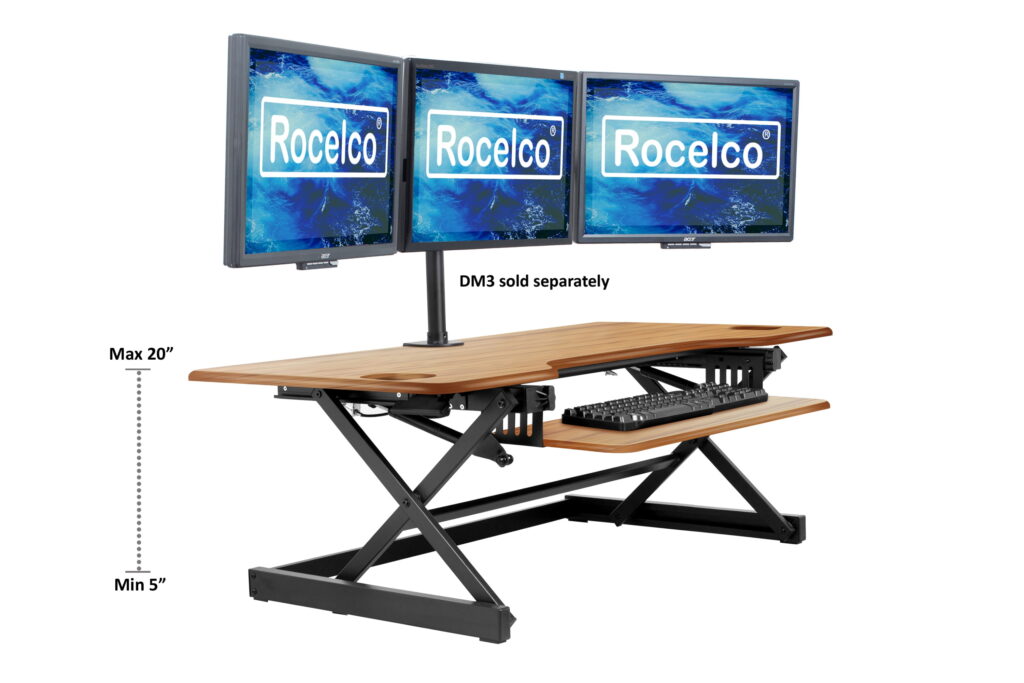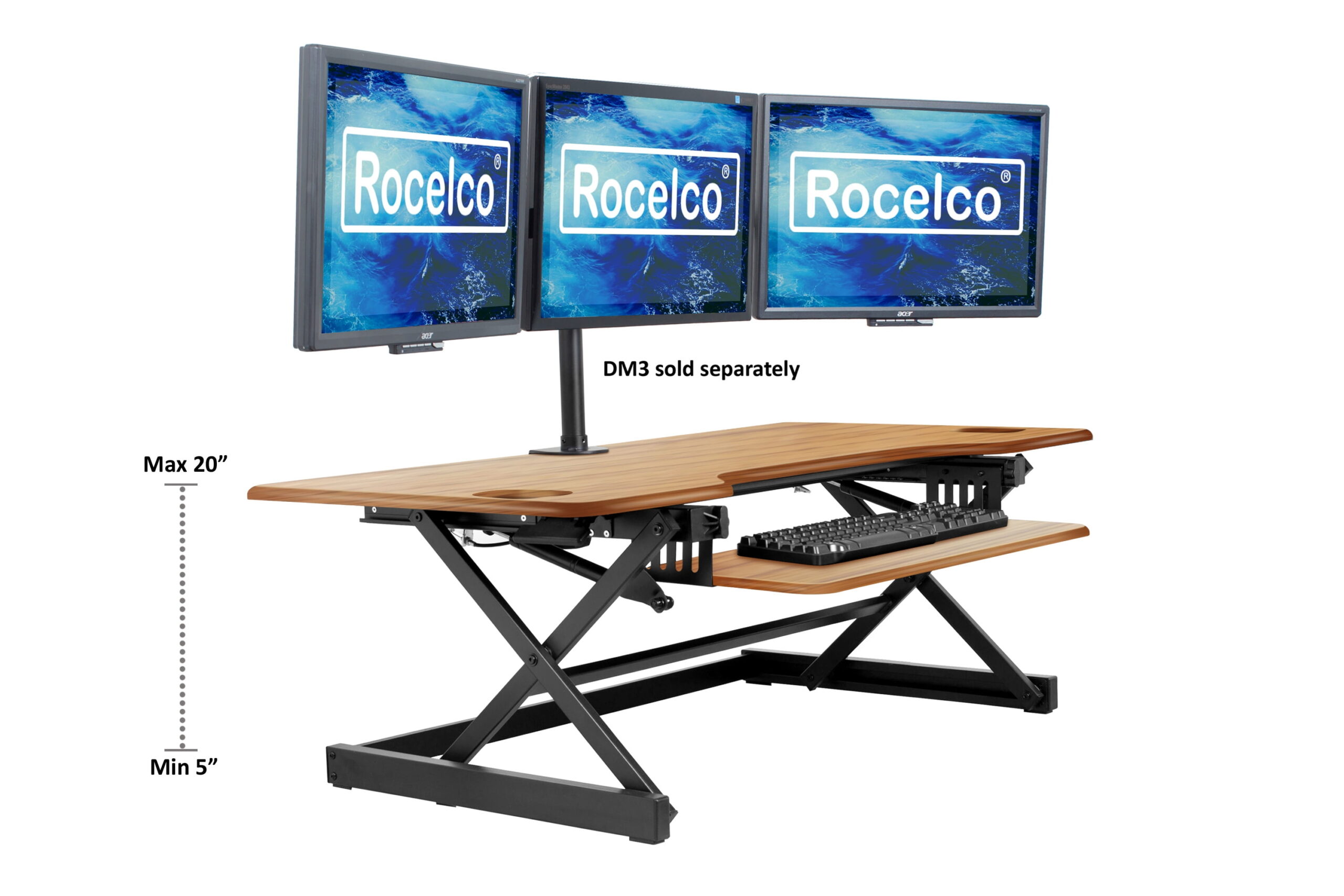
Boost Productivity and Health with a Sit Stand Converter: A Comprehensive Guide
In today’s fast-paced work environment, maintaining both productivity and well-being can be a challenge. Prolonged sitting, a common occurrence in office settings, has been linked to various health issues, including cardiovascular problems, obesity, and musculoskeletal disorders. A sit stand converter offers a practical solution, transforming your existing desk into a dynamic workstation that allows you to switch between sitting and standing throughout the day. This guide explores the benefits, types, and considerations when choosing a sit stand converter, empowering you to make an informed decision and enhance your work life.
The Rise of the Sit-Stand Workstation
The concept of alternating between sitting and standing while working isn’t new, but its popularity has surged in recent years, driven by increased awareness of the negative effects of sedentary behavior. Research consistently highlights the health risks associated with prolonged sitting, prompting individuals and organizations to seek ergonomic solutions. The sit stand converter has emerged as a cost-effective and accessible way to address this concern, offering a seamless transition to a more active and healthier work style. Unlike a completely new standing desk, a sit stand converter allows you to keep your existing desk setup, saving both money and the hassle of reconfiguring your workspace.
Benefits of Using a Sit Stand Converter
Investing in a sit stand converter can yield numerous benefits, impacting your physical health, mental well-being, and overall productivity.
Improved Physical Health
One of the primary advantages of using a sit stand converter is its positive impact on physical health. By alternating between sitting and standing, you can:
- Reduce Back Pain: Standing helps alleviate pressure on the spine, reducing back pain and discomfort.
- Boost Circulation: Standing promotes better blood flow, which can reduce the risk of cardiovascular issues.
- Burn More Calories: Standing burns more calories than sitting, contributing to weight management and reducing the risk of obesity.
- Improve Posture: Standing encourages better posture, reducing strain on the neck and shoulders.
Enhanced Productivity and Focus
Beyond physical health, a sit stand converter can also enhance productivity and focus. Studies have shown that:
- Increased Energy Levels: Standing can boost energy levels and reduce feelings of fatigue.
- Improved Concentration: Alternating between sitting and standing can improve concentration and focus.
- Reduced Mental Fatigue: Standing can help reduce mental fatigue and improve cognitive function.
Increased Employee Morale
For employers, providing sit stand converters can boost employee morale and create a more positive work environment. Employees feel valued when their health and well-being are prioritized. This can lead to increased job satisfaction, reduced absenteeism, and improved overall productivity. [See also: The Impact of Ergonomics on Employee Well-being]
Types of Sit Stand Converters
The market offers a wide variety of sit stand converters, each with its own unique features and benefits. Understanding the different types can help you choose the one that best suits your needs and preferences.
Desktop Converters
Desktop converters are the most common type of sit stand converter. They sit on top of your existing desk and provide a platform for your monitor, keyboard, and mouse. Desktop converters are available in various styles, including:
- Spring-Assisted Converters: These converters use a spring mechanism to make it easier to raise and lower the platform.
- Gas-Spring Converters: These converters use a gas spring to provide smooth and effortless height adjustment.
- Electric Converters: These converters use an electric motor to raise and lower the platform, offering the most convenient height adjustment.
Platform Converters
Platform converters are a simpler type of sit stand converter that consists of a single platform that raises and lowers. They are typically more affordable than desktop converters but may offer less stability and fewer features.
Keyboard Tray Converters
Keyboard tray converters are designed to raise and lower only the keyboard and mouse, allowing you to stand while keeping your monitor at the same height. They are a good option for those who primarily need to stand while typing.
Full Desk Risers
These are larger units that replace a portion of your existing desk. They often offer more stability and a larger work surface than smaller desktop converters. However, they also tend to be more expensive.
Factors to Consider When Choosing a Sit Stand Converter
Choosing the right sit stand converter requires careful consideration of several factors:
Height Adjustment Range
Ensure that the sit stand converter offers a sufficient height adjustment range to accommodate your height, both when sitting and standing. Measure the distance from the floor to your elbows when sitting and standing to determine the ideal height range.
Weight Capacity
Check the weight capacity of the sit stand converter to ensure that it can support your monitor, keyboard, mouse, and any other items you plan to place on it. Exceeding the weight capacity can damage the converter and create a safety hazard.
Desk Space
Consider the amount of space you have available on your desk. Choose a sit stand converter that fits comfortably on your desk without overcrowding your workspace.
Stability
Opt for a sit stand converter that is stable and sturdy, especially when fully extended. A wobbly converter can be distracting and uncomfortable to use.
Ease of Use
Choose a sit stand converter that is easy to adjust and operate. Look for models with smooth and effortless height adjustment mechanisms.
Ergonomics
Ensure that the sit stand converter promotes good ergonomics. The monitor should be at eye level, and the keyboard and mouse should be positioned comfortably to prevent strain on your wrists and arms. Proper ergonomics are crucial for preventing repetitive strain injuries. [See also: Ergonomic Best Practices for a Healthy Workstation]
Budget
Sit stand converters range in price from affordable to premium. Determine your budget before you start shopping to narrow down your options.
Setting Up Your Sit Stand Converter
Proper setup is crucial for maximizing the benefits of your sit stand converter. Follow these tips to ensure a comfortable and ergonomic setup:
- Place the converter on a stable surface: Ensure that your desk is sturdy and can support the weight of the converter and your equipment.
- Adjust the height: Adjust the height of the converter so that your monitor is at eye level when you are sitting and standing.
- Position your keyboard and mouse: Position your keyboard and mouse comfortably, with your wrists straight and your elbows at a 90-degree angle.
- Take breaks: Alternate between sitting and standing throughout the day. Start with short periods of standing and gradually increase the duration as you become more comfortable.
- Use proper posture: Maintain good posture when sitting and standing. Keep your back straight, your shoulders relaxed, and your feet flat on the floor.
Integrating Standing into Your Workday
Transitioning to a standing desk can take some getting used to. Start slowly and gradually increase the amount of time you spend standing. Listen to your body and take breaks when needed. Here are some tips for integrating standing into your workday:
- Set reminders: Use a timer or app to remind you to switch between sitting and standing.
- Stand during meetings: Stand during phone calls and virtual meetings.
- Walk around: Take short walks throughout the day to stretch your legs and improve circulation.
- Invest in a standing mat: A standing mat can provide cushioning and support for your feet and legs, making it more comfortable to stand for extended periods.
The Future of Work: Embracing Ergonomic Solutions
As awareness of the importance of ergonomics and employee well-being continues to grow, the sit stand converter is poised to become an increasingly common fixture in the modern workplace. By providing a simple and effective way to alternate between sitting and standing, these converters offer a valuable tool for promoting health, productivity, and overall job satisfaction. Embracing ergonomic solutions like the sit stand converter is not just a trend, but a necessary step towards creating a healthier and more sustainable work environment for all. The benefits of using a sit stand converter are undeniable, and its adaptability to existing workspaces makes it a practical choice for individuals and organizations alike. Ultimately, investing in a sit stand converter is an investment in your health and well-being, both in and out of the office. Consider a sit stand converter today!

